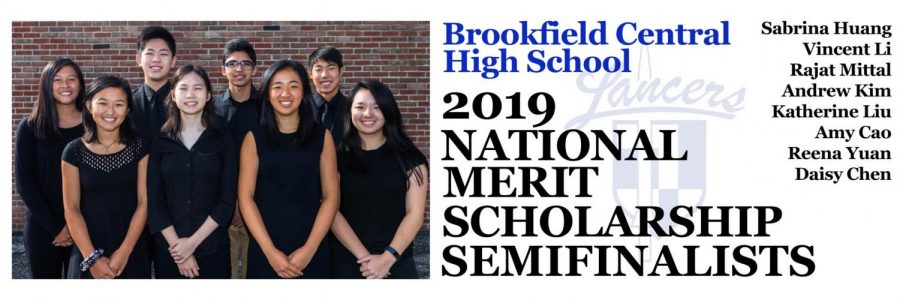PSAT offers opportunities
National Merit Semifinalists 2018: (Top row, left to right) Sabrina Huang, Vincent Li, Rajat Mittal, and Andrew Kim. (Bottom row, left to right) Katherine Liu, Amy Cao, Reena Yuan, and Daisy Chen. These eight students are essentially the top of the top — their scores were in the top 0.5% of the entire country, and they were chose out of the large pool of 1.6 million qualifying students.
The Preliminary SAT, also known as the PSAT, was held on the morning of October 10. Students who had signed up for it reported to the main gym before school with an approved calculator and several No. 2 pencils in hand. The test lasted until noon, when the students were finally released back to either their third block class or lunch.
Without a doubt, the PSAT was a long and exhausting test that nearly drained the mental energy of most of the students who took it. It consists of four subjects: reading, writing, and two math sections — one that prohibits the use of a calculator and one that allows it. Each test lasted about an hour, with short 5-minute breaks in between.
The purpose of the PSAT can be two things: for some people, it’s solely for practice before taking the SAT college entrance exam; for others, it’s to enter the National Merit Scholarship Program. Those who score high enough on the Preliminary SAT/National Merit Scholarship Qualifying Test (PSAT/NMSQT) in their junior year of high school and meet other entry requirements are able to move on to the next stage of the competition. Out of 1.6 million entrants, 50,000 are recognized either by receiving a letter of commendation or by becoming semifinalists.
Fifteen thousand finalists are then chosen from the pool of semifinalists, and during the spring of their graduating year, 7,500 students receive one of three scholarship prizes: National Merit $2500 Scholarships, corporate-sponsored scholarships, or college-sponsored scholarships. Winners are chosen on the basis of their abilities, skills, and accomplishments. The competition is normally very tight for those who participate, as scores are usually quite close and other factors (such as a submitted application) must be taken into consideration.
In contrast, for students who took the PSAT in a grade level other than their junior year, it provided practice for a future PSAT or for the SAT, a test whose score colleges often look at when determining who to accept and reject. Niyati Hansaria (‘21) shares her perspective on the PSAT: “My outlook on the PSAT is that it’s a great opportunity for me to practice for the actual one that I will take next year.” She also notes that the format of the test, although designed to be challenging, allows test-takers to prove their academic ability. “I think that it’s structured really nicely, so that everyone can work towards achieving their highest possible score,” she contends.
Scores for this PSAT will be sent out in early December, and National Merit semifinalists will be announced next fall.





